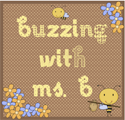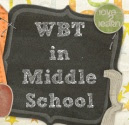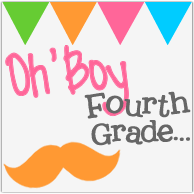Tomorrow is our final exam in our Teaching of Aboriginal Studies class. Here is my completion of our exam review, wish me luck! :)
10 Ways to Assess for Racism/Sexism in Classroom Resources
1 ) Look at the
Illustrations
- Is there "tokensim"?
- Who is doing what in the image?
2 ) What is the
Story Line
- Does the character need to adopt "white" traits to be successful?
- Who solves the problem in the story?
- What is the role of women?
3 ) What is their
Lifestyle
- Can you tell their social class?
- Employment?
- Housing?
4 ) What are the character's
Inter-personal Relationships
- Who is the authority figure?
- Who makes the decisions?
- What is the family structure?
5 ) Who is the
Hero
- Whose interests does the hero serve?
6 ) What effect does the story have on a child's
Self-Image
- How would the story make a child feel about themselves?
- Is their race portrayed positively?
- Would they feel like they are being stereotyped?
7 ) What is the
Author's Background
- What qualifications does the author have?
- Are they of the same race as the characters in the book?
8 ) What is the
Author's Perspective
- Cultural context?
- Personal context?
9 ) Look at
Loaded Words
- Tricky
- Sneaky
- Lazy
- Docile
10 ) When is the
Copyright Date
- Is it outdated?
- What were the thoughts of that time period?
Things to AVOID when Picking Books
- Inaccurate Information (mixing cultures together)
- Stereotypes
- Generic Portrayals of "Indians"
- Loaded Words (see above)
- Negative Images
- Isolated Information (no context and/or background)
Things to LOOK FOR when Picking Books
- Authentic Information
- Modern Descriptions of Aboriginal People
- Diverse (shows that there are many groups of people)
- Respectful Language
- Positive Image
- Relevance (local to your area)
Chapter 7, pg 175
Kanu, Yatta. (2011). Integrating Aboriginal Perspectives into the School Curriculum: Purposes, Possibilities and Challenges. Toronto: University of Toronto Press.
Studies find that teachers think that incorporating Aboriginal perspective is important in the classroom but these factors create difficulty:
- lack of knowledge/understanding about Aboriginal people
- teachers are excluded from decisions on how to integrate
Aboriginal perspective
- lack of suitable classroom resources
- lack of long-term support from admin
- school structure doesn't mesh with traditional Aboriginal
education
- a teacher's personal beliefs and biases
James Banks Levels of Integration of Multicultural Context
1 )
Contributions Approach
- Incorporates heroes and holidays
- No context for the information
- Firm cutoff
2 )
Additive Approach
- Incorporates a unit (April Raintree)
- Doesn't change any of the outcomes
3 )
Transformations Approach
- Looks at information from different points of view
- Changes the outcomes/curriculum
4 )
Social Action Approach
- Students learn about issues and take action to solve them
- Decision making process
Chapter 7, pg 169
Kanu, Yatta. (2011). Integrating Aboriginal Perspectives into the School Curriculum: Purposes, Possibilities and Challenges. Toronto: University of Toronto Press.
Teachers believe the integrating Aboriginal perspective is crucial for these reasons:
1 ) There is
a need to learn from Aboriginal peoples. Some cited examples are,
- stories & their message
- spirituality
- caring for an extended family
2 ) Learning needs to be
culturally relevant
- represents our student's history, culture and experiences
3 ) Improvement of
self-image & identity
- there are many negative images in the media
- we need to improve how Aboriginal students see themselves
4 ) Economic results of
dropping out
- Aboriginal populations are growing fast and have many young people
- Canada as a whole is an aging population and needs more skilled people in
the work force
5 ) Need for
inclusion
- Canada is a multicultural democracy
6 ) Need to
inform Aboriginal students and other students of this
information
- all students need to understand Aboriginal background & understand
how it has shaped Canada
Chapter 7, pg 173
Kanu, Yatta. (2011). Integrating Aboriginal Perspectives into the School Curriculum: Purposes, Possibilities and Challenges. Toronto: University of Toronto Press.
Here are some examples of things that a teacher has done that have incorporated Aboriginal perspective into her classroom:
- displays of artifacts
- posters
- current event flyers
- books by Aboriginal authors
- sharing circles
- guest speakers
- legends
- sharing of her personal vision quests
- using Aboriginal art and symbols
- positive content
- respect and warmth
- follows the mood of the class
Chapter 7, pg 191
Kanu, Yatta. (2011). Integrating Aboriginal Perspectives into the School Curriculum: Purposes, Possibilities and Challenges. Toronto: University of Toronto Press.
What does it mean to be a Facilitator of Integration? How can we facilitate the integration of Aboriginal perspective? Here is what teachers said they needed in order to facilitate the integration of Aboriginal perspective:
1 ) Teachers Professional Efficacy
- teachers need knowledge of Aboriginal cultures
- teachers need knowledge of appropriate Aboriginal pedagogy
2 ) Resource Adequacy
- teacher need easy-to-use materials for students and themselves
3 ) PD Opportunities
- teachers need PD opportunities to better prepare themselves
4 ) Sustainable Funding
- teachers need to be able to have funds so that they can draw on the
First Nations communities around them for resources
- admin needs to be supportive and accountable
5 ) Change in School Culture
- overhaul
- things can't change is the school culture wont change
Chapter 7, pg 194-97
Kanu, Yatta. (2011). Integrating Aboriginal Perspectives into the School Curriculum: Purposes, Possibilities and Challenges. Toronto: University of Toronto Press.
Here is a shortened version of the 12 Point list that is summarized at the end of Chapter 7 in regards to what needs to be done to be Facilitators of Integration:
1 ) All teachers need knowledge and understanding about Aboriginal:
- history
- issues
- pedagogy
- culture
2 ) School supports need to be in place (like funding & PD opportunities)
3 ) Curriculum development should include teachers
4 ) Easy-to-access resources
5 ) Curriculum/textbooks should feature Aboriginal culture, content, issues, pedagogy
6 ) High quality research on school culture (general and specific)
7 ) Strong/supportive admin who take action
8 ) More Aboriginal teachers
9 ) Funds allocated for Aboriginal integration
- school liaisons
- guest speakers
- resources
10 ) Use elders to teach what you can't (or what you shouldn't)
11 ) Involvement of Aboriginal parents
- guest speakers
- committee members
- volunteers
12 ) Change to the school structure
- scheduling
MASS Position Statement on Aboriginal Education
"The way forward must draw upon the knowledge and expertise found among Manitoba's Aboriginal people."
A ) Find ways to live in harmony & balance with yourself and the universe
through sustainable & generative relationships
B ) Create & maintain healthy & diverse learning communities by using
authentic learning contexts for all students
C ) Foster and support Aboriginal languages & culture
D ) Instill & fulfill the beliefs of responsibility (individually and community)
in the classroom
4 R's of Aboriginal Education
- Respect
- Responsibility
- Reciprocity
- Relevance
The 4 Imperatives
1 )
Historical
- Need to respect treaty obligations
- Achieve equitable outcomes
2 )
Moral
- Gaps in quality of life
- Higher drop out rates
- Higher health concern rates
- Higher incarceration rates
3 )
Economic
- Dwindling work force with baby-boomers retiring
- Economy needs full participation in the work force
4 )
Demographic
- Aboriginals are the youngest and fastest growing population
- Over 50% attend provincial schools
- By 2016, 45% of Kindergarten students with be Aboriginal
Good luck to everyone else out there finishing up final exams and projects!













.JPG)















.gif)
